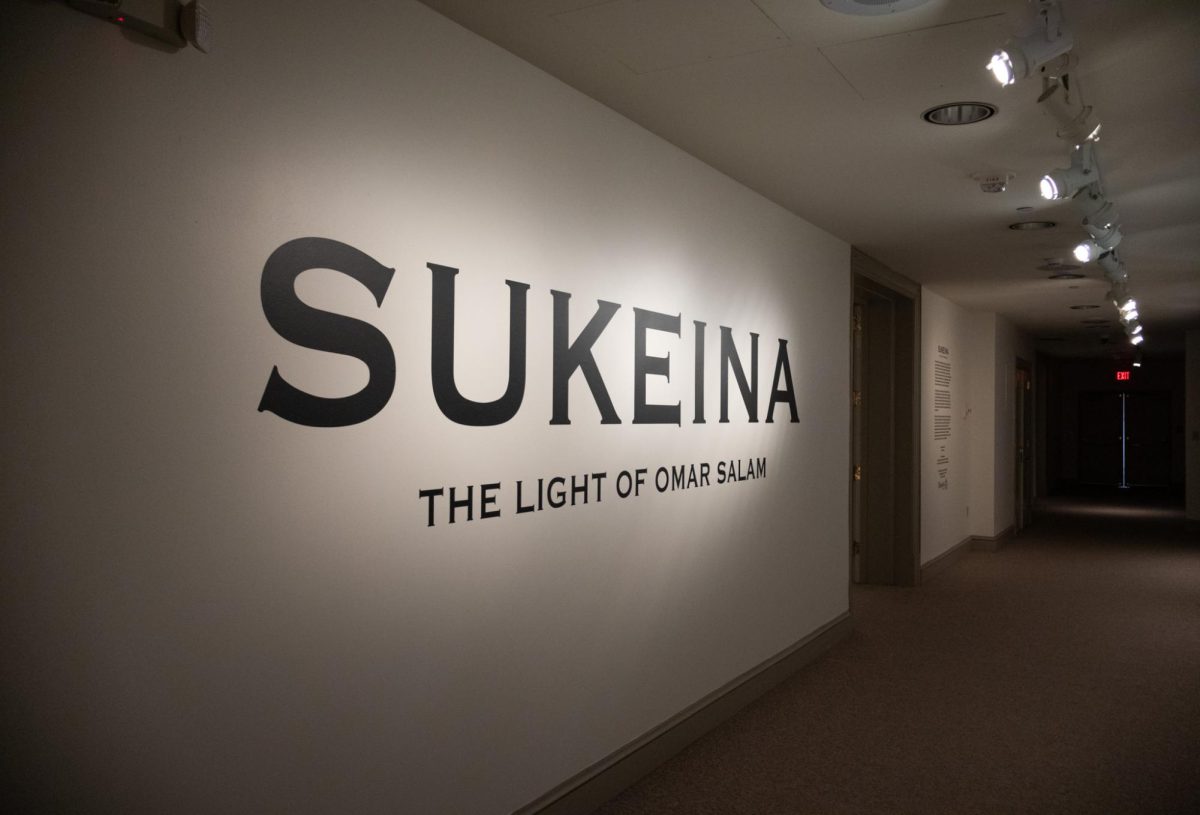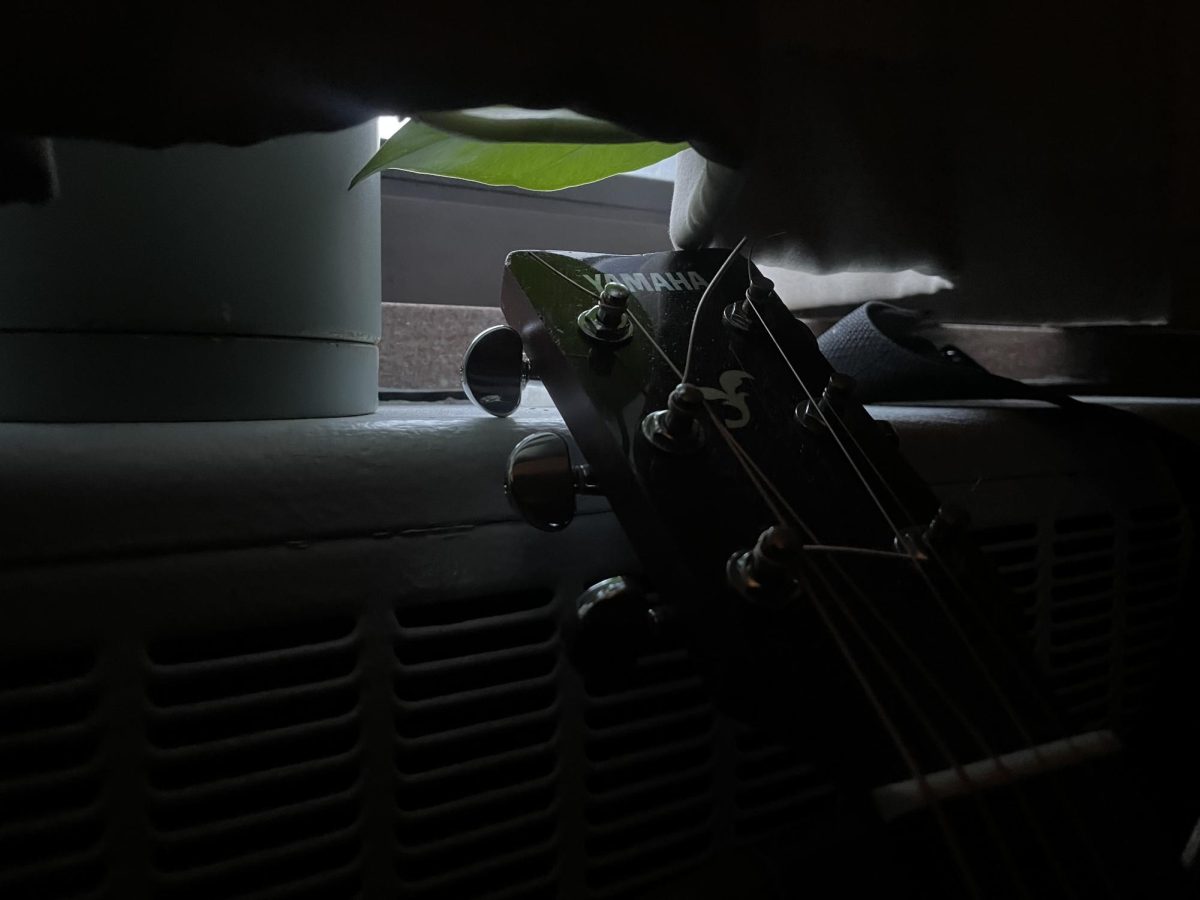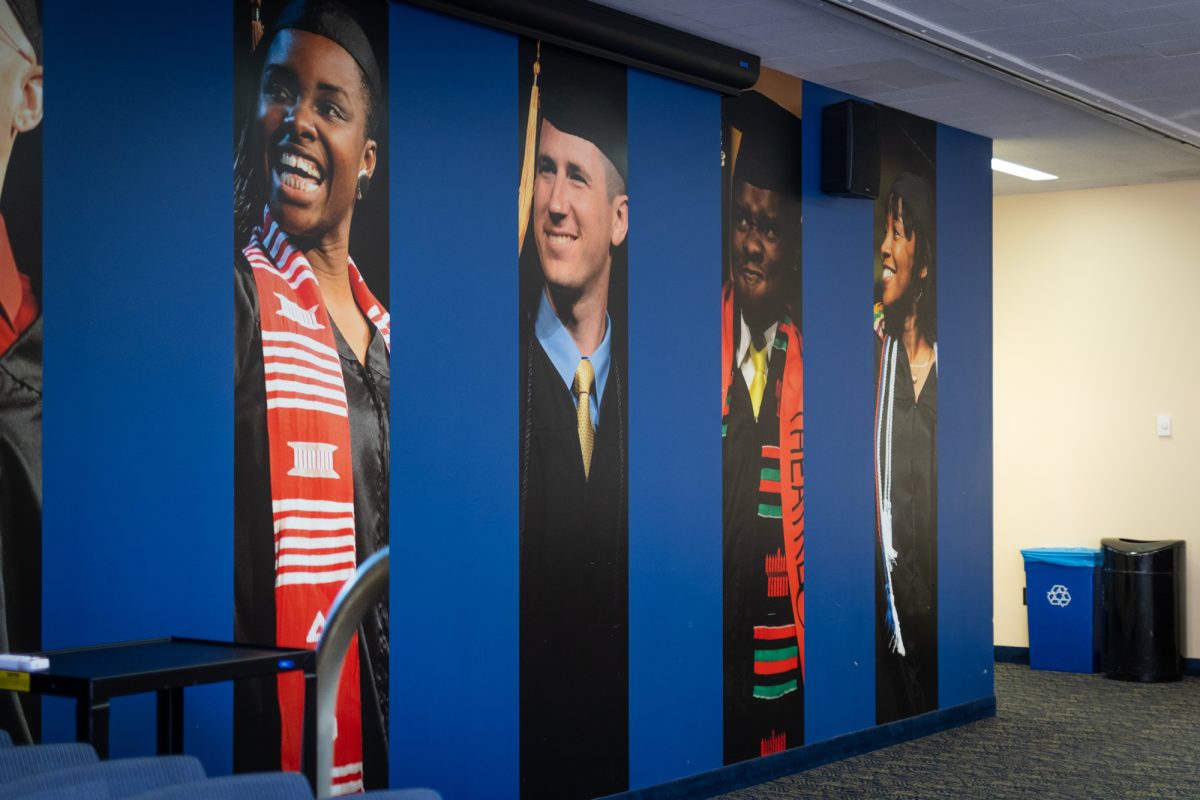Fashion brand Sukeina, founded by Omar Salam, made its museum debut in the United States on Feb. 16 with a stylistically and visually immersive exhibit at the Kent State University Museum.
Tucked in a corner to the right of the fashion museum’s gift shop are images of Sukeina garments that are impossible to ignore. Observers are submerged into a story of a brand that is simultaneously cohesive and individual. Sukeina produces ready-to-wear pieces, but they are not similar to anything else that can be found “off the rack.”
“He (Salam) is a really dynamic designer,” said Sara Hume, curator at the Kent State University Museum. “The sort of origami with the neoprene is an innovative use of materials, and the way the fringe and the handcrafting of the mesh and the fringe intersect is so innovative and appealing to us as a subject for the exhibition.”
Hume said that Salam “took a forward role” in the display of the collection in order to accurately represent the eccentricity of Sukeina as a brand and their mission to be masters of storytelling.
“Being able to, for the first time in America or ever, be in a setting where it wasn’t so much about ‘How much does it cost?’ but more about, ‘What about this clothing is so fundamentally new, that long after our time on this Earth would be a contribution to the making of garments as humanity?’” Salam said, “that’s why I was so excited for this opportunity, and hence why I wanted to be there even in the installation part of it.”
Salam intentionally placed each garment chronologically to showcase how each design and technique builds off the last and foreshadows the future. The exhibit conceptualizes his growth through his artistry and manipulation of textiles. In the exhibit, Salam said the story starts to the left.
“This collection says that clothes can go as far as you are willing to take it. You can look at clothes as something that is a matter of practicality,” Salam said. “You can put it on for modesty to cover parts of your body, or you put it on when it is cool to stay warm. I think that clothes can also be a trampoline to really propel what you are, who you are, how you feel, what you want to say and what you want people to ask… [Dressing] is a much richer language. Sometimes no dressing at all is a form of dressing. I want to invite people to understand what in dressing we do address.”
The first two garments are black dresses with a honeycomb-like fabric braided together. Several more black dresses follow, but no one is like the other. Each unique garment is left purposefully without accessories in order to speak to an individual style and personality that observers are challenged to make their own.
Salam demonstrates cohesive and replicable colors throughout various mediums in tandem with juxtapositions of fabric and color. The ability to evoke a signature palette of color that does not constrain him creatively is a critical point of his creations.
Even though the mannequins are in a permanent state of stasis, the movement of the forms of the various garments can be felt throughout the progression of the pieces. The momentum of the garments and textiles is congruent with his growth as a designer. While the exhibit maintains a consistent color palette, Salam takes advantage of specific shapes and materials by elevating and introducing unique interjections of color that place emphasis on the intention of making each garment an individual.
The largest part of the exhibit is the room with the Cardinal collection. It features eight garments made of a variety of materials with one color: cardinal red.
While creating the Cardinal collection, Salam said that he was fascinated by the ability that animals like crocodiles and snakes have to blend in with their surroundings. However, despite being tiny little birds that are seemingly insignificant, cardinals are striking in comparison to their environment and are symbols of loyalty.
“I thought we could take a page out of the book of the cardinal bird as if they understand what they are and only they can be the best at that and accept themselves regardless of its size and not need to camouflage, not needing to blend or be anything other than what it actually is,” Salam said. “I felt that the Cardinal bird somehow has taught me that… not trying to blend to anything; not trying to look like anything was enough.”
The Sukeina exhibit is on display in the fashion museum until June 2, 2024.
Tessa Poulain is a reporter. Contact her at [email protected].
























